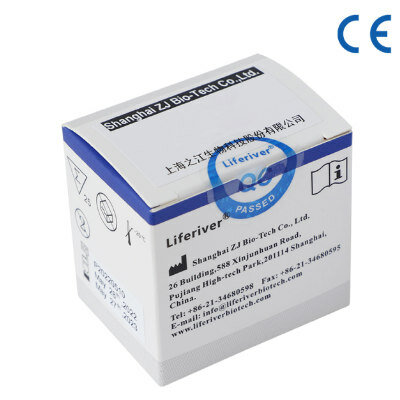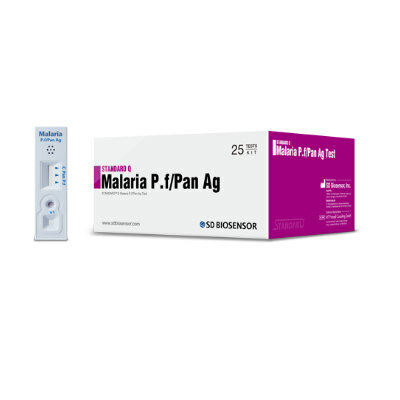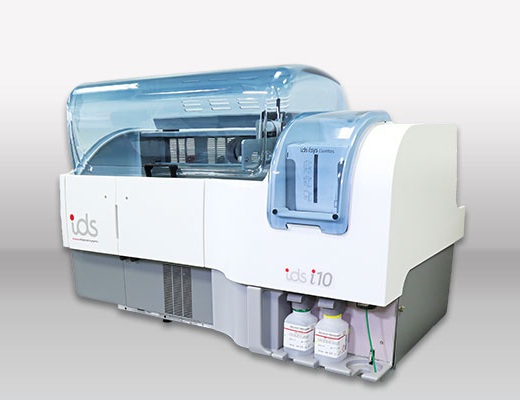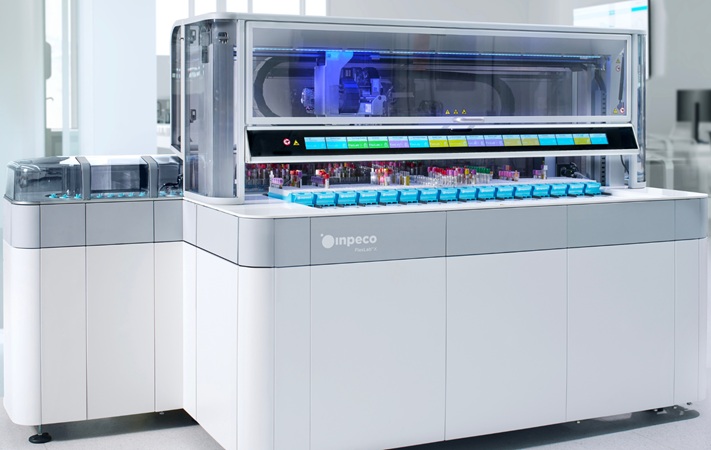Biomarker Identifies Uveal Melanoma Patients at Risk for Metastasis
|
By LabMedica International staff writers Posted on 15 Mar 2016 |
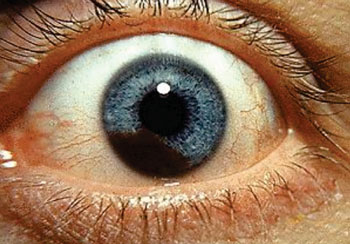
Image: A cancer of the iris known as uveal melanoma (Photo courtesy of Dr. Jonathan Trobe, MD).
Uveal melanoma is a cancer (melanoma) of the eye involving the iris, ciliary body, or choroid, collectively referred to as the uvea. Tumors arise from the pigment cells (melanocytes) that reside within the uvea giving color to the eye.
Uveal melanoma (UM) can be classified by gene expression profiling (GEP) into Class 1 (low metastatic risk) and Class 2 (high metastatic risk), the latter being strongly associated with mutational inactivation of the tumor suppressor gene BRCA1 Associated Protein-1 (Ubiquitin Carboxy-Terminal Hydrolase (BAP1).
Scientists at the University of Miami Miller School of Medicine (Miami, FL, USA) performed genome-wide analysis of messenger ribonucleic acid (mRNA) isolated from five class 1 uveal melanomas that metastasized and eight class 1 tumors that did not metastasize. A total of 389 consecutive patients with UM were assigned to Class 1 or Class 2 using a prospectively validated 12-gene prognostic classifier. Selected tumors were further analyzed using global GEP and single nucleotide polymorphism microarrays. PRAME (preferentially expressed antigen in melanoma) mRNA expression was analyzed in 64 Class 1 tumors by quantitative polymerase chain reaction (PCR).
Among 64 class 1 uveal melanoma samples analyzed by quantitative PCR, 39 (61%) had low levels of PRAME mRNA (PRAME negative) and 25 (39%) had high levels of PRAME mRNA (PRAME positive). None of the patients with PRAME-negative tumors developed metastasis while seven of the patients with PRAME-positive tumors did. The 5-year actuarial rate of metastasis was 0% for Class1PRAME−, 38% for Class1PRAME+, and 71% for Class 2 tumors. Median metastasis-free survival for Class1PRAME+ patients was 88 months, compared to 32 months for Class 2 patients.
J. William Harbour, MD, the senior author of the study said, “We were surprised to find that one biomarker alone PRAME was sufficient to identify the subgroup of class 1 tumors with increased metastatic risk. These findings could have immediate clinical impact. The data imply that patients with class 1 uveal melanomas with increased PRAME expression should be managed differently than patients with class 1 uveal melanomas without PRAME expression. They should be monitored more closely for metastatic disease and they should be considered for clinical trials of adjuvant therapy.” The study was published on March 1, 2016 in the journal Clinical Cancer Research.
Related Links:
University of Miami Miller School of Medicine
Uveal melanoma (UM) can be classified by gene expression profiling (GEP) into Class 1 (low metastatic risk) and Class 2 (high metastatic risk), the latter being strongly associated with mutational inactivation of the tumor suppressor gene BRCA1 Associated Protein-1 (Ubiquitin Carboxy-Terminal Hydrolase (BAP1).
Scientists at the University of Miami Miller School of Medicine (Miami, FL, USA) performed genome-wide analysis of messenger ribonucleic acid (mRNA) isolated from five class 1 uveal melanomas that metastasized and eight class 1 tumors that did not metastasize. A total of 389 consecutive patients with UM were assigned to Class 1 or Class 2 using a prospectively validated 12-gene prognostic classifier. Selected tumors were further analyzed using global GEP and single nucleotide polymorphism microarrays. PRAME (preferentially expressed antigen in melanoma) mRNA expression was analyzed in 64 Class 1 tumors by quantitative polymerase chain reaction (PCR).
Among 64 class 1 uveal melanoma samples analyzed by quantitative PCR, 39 (61%) had low levels of PRAME mRNA (PRAME negative) and 25 (39%) had high levels of PRAME mRNA (PRAME positive). None of the patients with PRAME-negative tumors developed metastasis while seven of the patients with PRAME-positive tumors did. The 5-year actuarial rate of metastasis was 0% for Class1PRAME−, 38% for Class1PRAME+, and 71% for Class 2 tumors. Median metastasis-free survival for Class1PRAME+ patients was 88 months, compared to 32 months for Class 2 patients.
J. William Harbour, MD, the senior author of the study said, “We were surprised to find that one biomarker alone PRAME was sufficient to identify the subgroup of class 1 tumors with increased metastatic risk. These findings could have immediate clinical impact. The data imply that patients with class 1 uveal melanomas with increased PRAME expression should be managed differently than patients with class 1 uveal melanomas without PRAME expression. They should be monitored more closely for metastatic disease and they should be considered for clinical trials of adjuvant therapy.” The study was published on March 1, 2016 in the journal Clinical Cancer Research.
Related Links:
University of Miami Miller School of Medicine
Latest Pathology News
- AI Model Predicts Patient Response to Bladder Cancer Treatment
- New Laser-Based Method to Accelerate Cancer Diagnosis
- New AI Model Predicts Gene Variants’ Effects on Specific Diseases
- Powerful AI Tool Diagnoses Coeliac Disease from Biopsy Images with Over 97% Accuracy
- Pre-Analytical Conditions Influence Cell-Free MicroRNA Stability in Blood Plasma Samples
- 3D Cell Culture System Could Revolutionize Cancer Diagnostics
- Painless Technique Measures Glucose Concentrations in Solution and Tissue Via Sound Waves
- Skin-Based Test to Improve Diagnosis of Rare, Debilitating Neurodegenerative Disease
- Serum Uromodulin Could Indicate Acute Kidney Injury in COVID-19 Patients
- AI Model Reveals True Biological Age From Five Drops of Blood
- First-Of-Its-Kind AI Tool Visualizes Cell’s ‘Social Network’ To Treat Cancer
- New Test Diagnoses High-Risk Childhood Brain Tumors
- Informatics Solution Elevates Laboratory Efficiency and Patient Care
- Microfluidic Device Assesses Stickiness of Tumor Cells to Predict Cancer Spread
- New AI Tool Outperforms Previous Methods for Identifying Colorectal Cancer from Tissue Sample Analysis
- New Technique Predicts Aggressive Tumors Before They Metastasize
Channels
Clinical Chemistry
view channel
Carbon Nanotubes Help Build Highly Accurate Sensors for Continuous Health Monitoring
Current sensors can measure various health indicators, such as blood glucose levels, in the body. However, there is a need to develop more accurate and sensitive sensor materials that can detect lower... Read more
Paper-Based Device Boosts HIV Test Accuracy from Dried Blood Samples
In regions where access to clinics for routine blood tests presents financial and logistical obstacles, HIV patients are increasingly able to collect and send a drop of blood using paper-based devices... Read moreMolecular Diagnostics
view channel
D-Dimer Testing Can Identify Patients at Higher Risk of Pulmonary Embolism
Pulmonary embolism (PE) is a commonly suspected condition in emergency departments (EDs) and can be life-threatening if not diagnosed correctly. Achieving an accurate diagnosis is vital for providing effective... Read more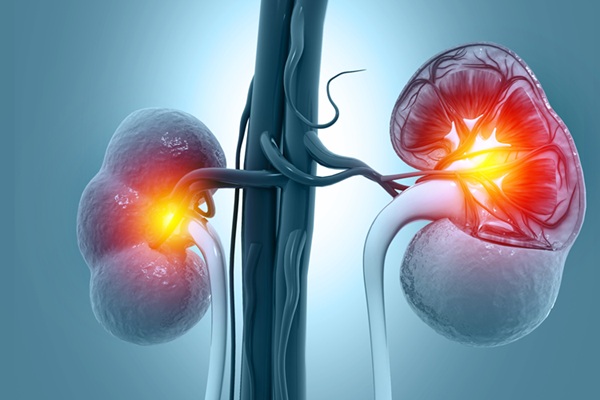
New Biomarkers to Improve Early Detection and Monitoring of Kidney Injury
Drug-induced kidney injury, also known as nephrotoxicity, is a prevalent issue in clinical practice, occurring when specific medications at certain doses cause damage to the kidneys. Nephrotoxicity can... Read moreHematology
view channel
New Scoring System Predicts Risk of Developing Cancer from Common Blood Disorder
Clonal cytopenia of undetermined significance (CCUS) is a blood disorder commonly found in older adults, characterized by mutations in blood cells and a low blood count, but without any obvious cause or... Read more
Non-Invasive Prenatal Test for Fetal RhD Status Demonstrates 100% Accuracy
In the United States, approximately 15% of pregnant individuals are RhD-negative. However, in about 40% of these cases, the fetus is also RhD-negative, making the administration of RhoGAM unnecessary.... Read moreImmunology
view channel
Post-Treatment Blood Test Could Inform Future Cancer Therapy Decisions
In the ongoing advancement of personalized medicine, a new study has provided evidence supporting the use of a tool that detects cancer-derived molecules in the blood of lung cancer patients years after... Read more
Cerebrospinal Fluid Test Predicts Dangerous Side Effect of Cancer Treatment
In recent years, cancer immunotherapy has emerged as a promising approach where the patient's immune system is harnessed to fight cancer. One form of immunotherapy, called CAR-T-cell therapy, involves... Read more
New Test Measures Preterm Infant Immunity Using Only Two Drops of Blood
Preterm infants are particularly vulnerable due to their organs still undergoing development, which can lead to difficulties in breathing, eating, and regulating body temperature. This is especially true... Read more
Simple Blood Test Could Help Choose Better Treatments for Patients with Recurrent Endometrial Cancer
Endometrial cancer, which develops in the lining of the uterus, is the most prevalent gynecologic cancer in the United States, affecting over 66,000 women annually. Projections indicate that in 2025, around... Read moreMicrobiology
view channel
Breakthrough Diagnostic Technology Identifies Bacterial Infections with Almost 100% Accuracy within Three Hours
Rapid and precise identification of pathogenic microbes in patient samples is essential for the effective treatment of acute infectious diseases, such as sepsis. The fluorescence in situ hybridization... Read more
Innovative ID/AST System to Help Diagnose Infectious Diseases and Combat AMR
Each year, 11 million people across the world die of sepsis out of which 1.3 million deaths are due to antibiotic-resistant bacteria. The burden of antimicrobial resistance (AMR) continues to weigh heavily,... Read more
Gastrointestinal Panel Delivers Rapid Detection of Five Common Bacterial Pathogens for Outpatient Use
Acute infectious gastroenteritis results in approximately 179 million cases each year in the United States, leading to a significant number of outpatient visits and hospitalizations. To address this, a... Read moreTechnology
view channel
Smartphones Could Diagnose Diseases Using Infrared Scans
Rapid advancements in technology may soon make it possible for individuals to bypass invasive medical procedures by simply uploading a screenshot of their lab results from their phone directly to their doctor.... Read more
Novel Sensor Technology to Enable Early Diagnoses of Metabolic and Cardiovascular Disorders
Metabolites are critical compounds that fuel life's essential functions, playing a key role in producing energy, regulating cellular activities, and maintaining the balance of bodily systems.... Read more
3D Printing Breakthrough Enables Large Scale Development of Tiny Microfluidic Devices
Microfluidic devices are diagnostic systems capable of analyzing small volumes of materials with precision and speed. These devices are used in a variety of applications, including cancer cell analysis,... Read moreIndustry
view channel







